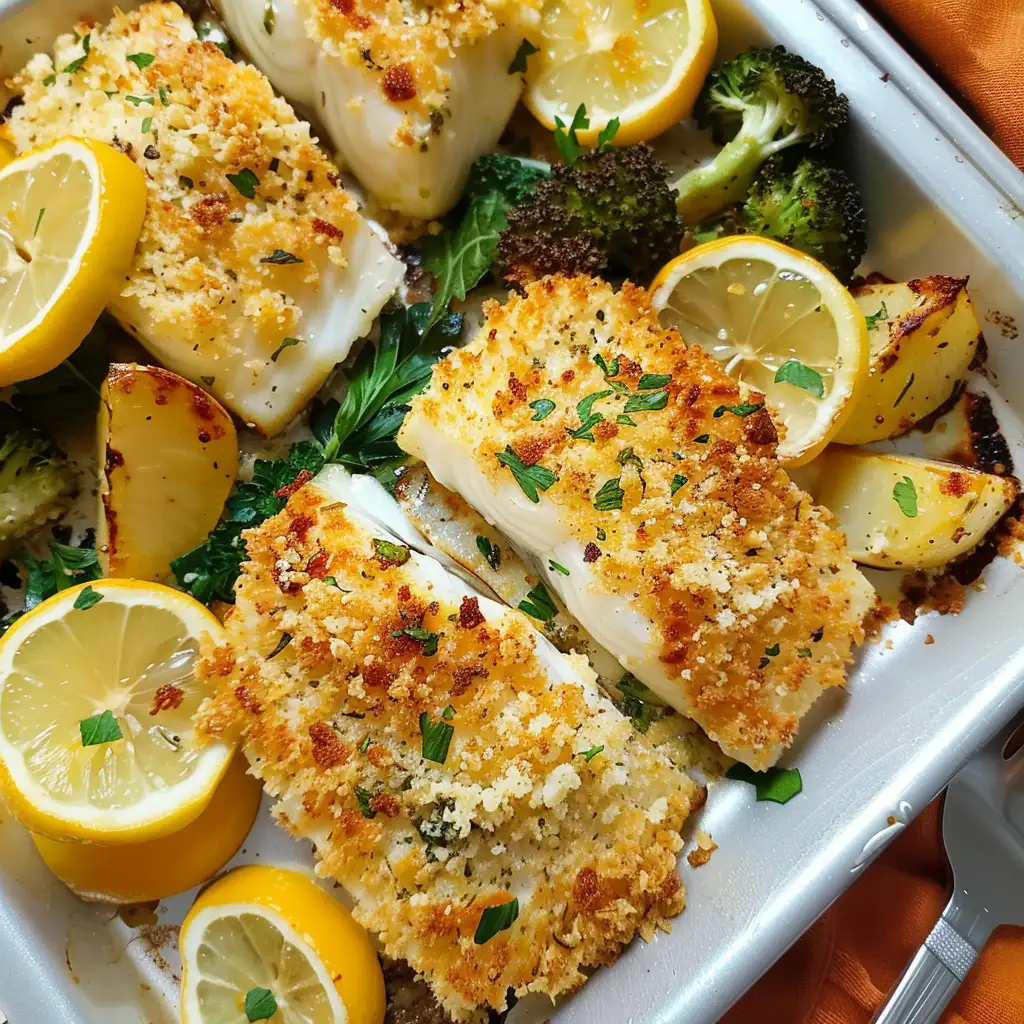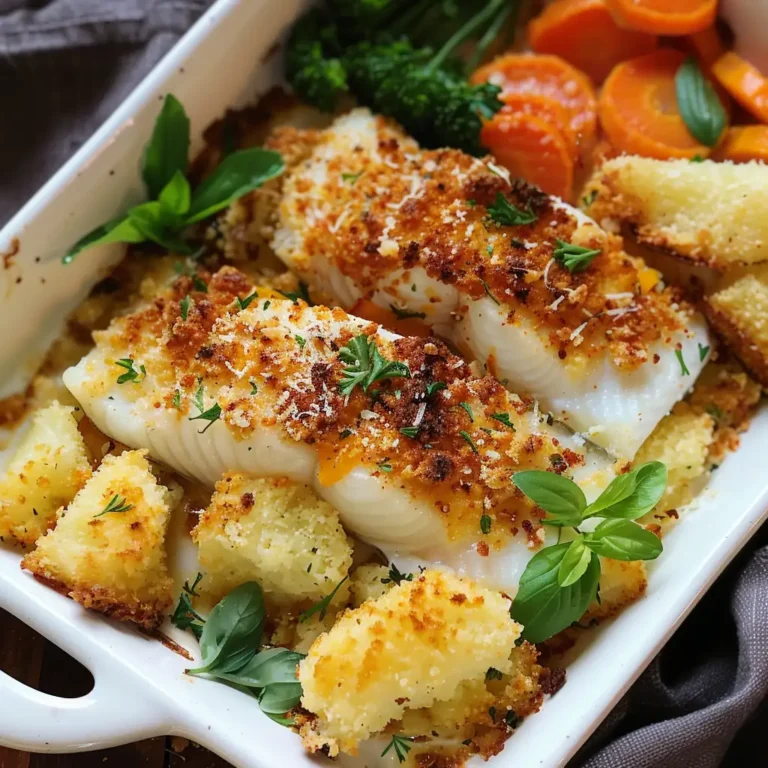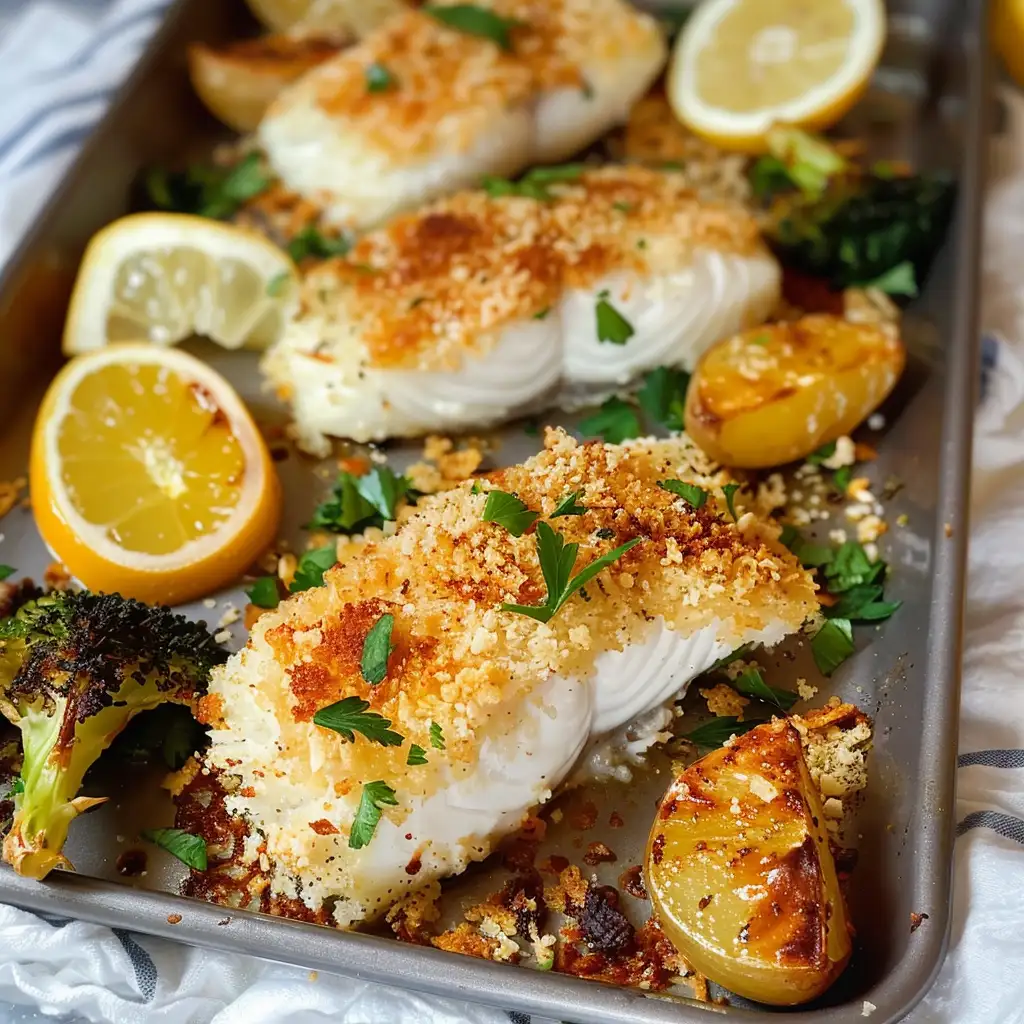Introduction to Parmesan-Crusted Baked Fish
Introduction to the Recipe
Parmesan-crusted baked fish is a delightful dish that marries the delicate flavors of fresh fish with a crispy, cheesy crust. This culinary creation involves coating a fillet of fish with a mixture of grated Parmesan cheese, breadcrumbs, and herbs before baking it to perfection. Its popularity stems from the combination of simplicity and elegance it brings to the dinner table. Easy to prepare yet impressively flavorful, Parmesan-crusted baked fish appeals to both the novice home cook and the seasoned gourmet.
Historical Background
The origins of Parmesan-crusted baked fish can be traced back to European cuisines, where cheese and fish have been combined for centuries to enhance flavors. Over time, this concept evolved, with the addition of Parmesan cheese as a key ingredient, to become a modern kitchen staple. It reflects a fusion of traditional and contemporary cooking techniques, symbolizing the adaptability of culinary traditions to modern tastes and dietary preferences.
Further exploring the evolution of fish dishes, ChooseMyPlate.gov highlights the importance of fish in a balanced diet, underscoring its nutritional benefits and its role in diverse culinary traditions around the world.
Health Benefits
- Nutritional information of key ingredients: Parmesan cheese is rich in calcium and protein, while fish is a high-quality source of omega-3 fatty acids, crucial for heart and brain health.
- Benefits of including fish in your diet:
- Heart health: Omega-3 fatty acids found in fish have been shown to lower the risk of heart disease.
- Brain function: Regular consumption of fish can contribute to improved brain health, particularly in terms of memory and cognitive function.
The Marine Stewardship Council provides further insights into selecting sustainable seafood options, emphasizing the health benefits of fish while promoting environmental stewardship.
Combining delicious flavors, health benefits, and a nod to culinary evolution, Parmesan-crusted baked fish stands out as a must-try dish. Its historical roots and nutritional value highlight its significance beyond just a meal, embodying a blend of tradition and wellness.
Preparing Parmesan-Crusted Baked Fish
Ingredients List
For a delightful Parmesan-crusted baked fish, gather the following ingredients:
- 4 fish fillets (about 6 ounces each), such as cod or tilapia
- 1 cup grated Parmesan cheese
- ½ cup breadcrumbs, preferably Italian-style for extra flavor
- ¼ cup fresh parsley, finely chopped
- 2 garlic cloves, minced
- Zest of 1 lemon
- 2 tablespoons olive oil
- Salt and pepper to taste
- Lemon wedges, for serving
Step-by-Step Cooking Instructions
Pre-preparation Steps:
- Preheat your oven to 400°F (200°C). This ensures a crispy crust and evenly cooked fish.
- In a shallow dish, combine the grated Parmesan cheese, breadcrumbs, chopped parsley, minced garlic, and lemon zest. Mix these dry ingredients thoroughly to ensure each fish fillet is evenly coated.
- Drizzle olive oil over the mixture, adding a rich flavor that helps bind the crust to the fish. Season with salt and pepper according to taste.
Step-by-Step Cooking Process:
- Prepare the fish fillets by rinsing them under cold water and patting them dry with paper towels. This step is crucial for the coating to adhere properly.
- Brush each fillet lightly with olive oil. This not only helps the coating stick but also adds moisture, ensuring the fish remains juicy.
- Dredge each fillet in the Parmesan mixture, pressing gently to coat both sides. Place the coated fillets on a greased baking sheet or in a baking dish.
- Bake in the preheated oven for about 12-15 minutes, or until the crust is golden and the fish flakes easily with a fork. The exact cooking time may vary depending on the thickness of the fillets.
Tips for Ensuring the Fish is Perfectly Cooked:
- Don’t Overcook: Fish is best enjoyed when it’s cooked just right. Overcooking can make it dry and tough. Check for doneness at the minimum baking time.
- Use a Thermometer: For precision, a cooking thermometer can ensure the fish reaches the safe internal temperature of 145°F (63°C) without overcooking.
- Let it Rest: Allow the baked fish to rest for a few minutes after removing it from the oven. This lets the juices redistribute, enhancing the flavor and texture.
For those interested in making this dish with the best possible ingredients, Food Network’s Cooking Guide offers a plethora of recipes and tips on selecting high-quality fish and cheese, ensuring your Parmesan-crusted baked fish turns out perfectly.
Creating a delicious Parmesan-crusted baked fish involves simple ingredients and steps, but the result is a dish full of flavor and texture. By following these tips and paying attention to the quality of your ingredients, you’ll ensure a meal that’s both satisfying and healthy.
Serving Suggestions
When it comes to serving Parmesan-crusted baked fish, complementing it with the right side dishes and presentation can elevate the meal:
- Side Dishes:
- Garlicky roasted asparagus or green beans for a touch of freshness
- Quinoa salad with lemon vinaigrette for a hearty yet light accompaniment
- Mashed sweet potatoes for a subtly sweet contrast to the savory fish
- Presentation Tips:
- Serve on a white plate to make the golden crust of the fish stand out
- Garnish with lemon wedges and a sprinkle of chopped parsley for a pop of color
- Arrange the side dishes around the fish in a way that complements its shape and size
Variations and Tips
Recipe Variations
For those looking to experiment or accommodate dietary restrictions, here are some variations to the classic Parmesan-crusted baked fish:
- Gluten-Free Version: Replace breadcrumbs with a mixture of almond flour and grated Parmesan for a gluten-free crust.
- Dairy-Free Option: Use nutritional yeast in place of Parmesan to achieve a similar cheesy flavor without dairy.
- Herb Variations: Incorporate different herbs like dill or thyme into the crust mixture for a unique flavor profile.
Food Network’s Cooking Guide offers more ideas on ingredient swaps and variations to cater to various dietary needs without compromising on taste.

Expert Tips
Gleaning tips from professional chefs can make all the difference in achieving the perfect Parmesan-crusted baked fish:
- Preparation is Key: Ensure your fish is thoroughly dried before coating to help the crust adhere better.
- Don’t Skimp on the Cheese: Use freshly grated Parmesan for the best flavor and melt.
- Baking Temperature: A high oven temperature is crucial for a crispy crust without overcooking the fish.
Common mistakes to avoid include overcrowding the baking sheet, which can result in steaming rather than baking, and flipping the fish during baking, which may cause the crust to fall off.
For additional insights and tips on perfecting your dish, consider exploring resources like ChooseMyPlate.gov, which offers nutritional advice that can be incorporated into the recipe development process.
By experimenting with variations and heeding expert advice, you can create a Parmesan-crusted baked fish that is not only delicious but also tailored to specific dietary preferences and needs.
FAQs
What type of fish is best for this recipe?
- The best types of fish for this recipe are mild, white fish such as cod, tilapia, haddock, or halibut. These varieties provide a neutral base that complements the rich Parmesan and herb crust perfectly.
Can this dish be made gluten-free?
- Absolutely! To make a gluten-free version of Parmesan-crusted baked fish, simply substitute traditional breadcrumbs with gluten-free breadcrumbs or a mixture of almond flour and grated Parmesan cheese. This swap allows you to maintain the dish’s signature texture and taste without gluten.
How can I ensure the Parmesan crust doesn’t fall off?
- To ensure the Parmesan crust adheres well to the fish:
- Pat the fish dry before coating.
- Press the coating mixture firmly onto the fish.
- Avoid moving the fish too much once it’s on the baking tray.
- Baking in a sufficiently hot oven helps the crust to ‘set’ quickly, reducing the likelihood of it falling off.
For detailed guidance on selecting the right fish and achieving the perfect crust, Food Network’s Cooking Guide offers a wealth of information on techniques and tips that can be applied to this recipe.



